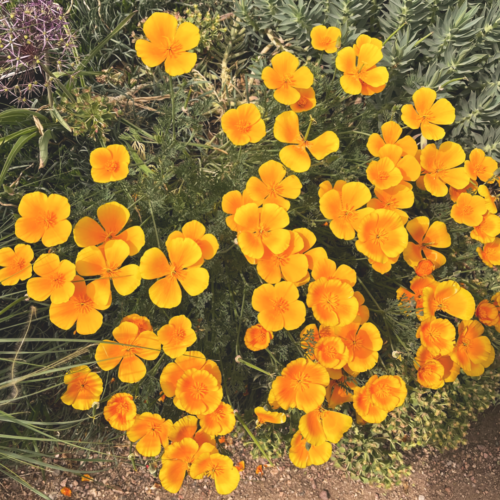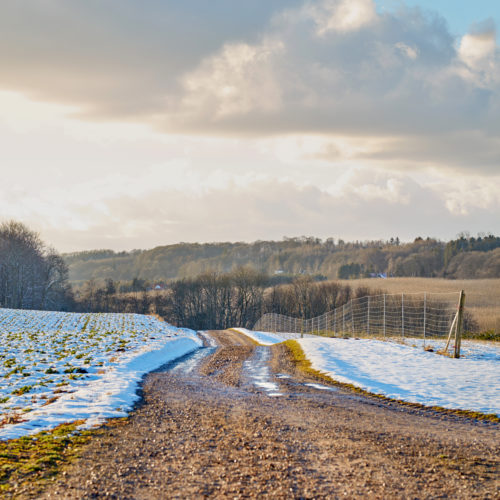
A few weeks before the women’s Bible study I attended closed last spring, I noticed dandelions popping up all over the property of my friend. She is the gracious host of such a delightful gathering. Aware, as I am, she takes environmental factors into her own hands and therefore I knew that these precious yellow flowers had not one smidgin of pesticide on them. After our study, I thought of the many dandelions that greeted me early morning, and upon arriving back home, sent her a text to ask if she would mind me picking a few when I return next week. Her kind answer was—I can have as many as I want.
The next week I arrived as early as possible to pick these precious flowers and started placing them into an empty mason jar. As I started this sweet adventure, a few other Bible study attendees drove up and asked what I was doing. I then shared I was gathering dandelions to make soap. They were both intrigued that such an annoying weed could be so beneficial, and they then offered to help me. I gratefully accepted. Once we had collected enough, I placed the jar into my car, and we walked into the room where we studied.
In our 30 minutes of socializing before we began, our discussions were on the many uses of the dandelion–from its roots, the leaves, and flower as well.
And here I share on such things:
The sweet and unsprayed dandelion is such an amazing plant. Its roots can be roasted to make a fine but bitter coffee, which tastes a bit like a stronger form of chicory. The roots can also be pickled as one would pickle radish. The younger nutritious leaves, I often add to salads, dry them for an excellent tisane, or create a nutritious tincture. Older leaves can be cooked with meat or fermented. The flowers, I often infuse for a few weeks in almond, grapeseed, or jojoba oil to make lotions or soaps, create delicious baked goods, make a quick cup of tea–iced or warm, produce sweet jelly, imbue vinegar, add to soups or other gourmet dishes, and I also use the flower to dye white fabric. I could continue! The dandelion’s utility is enormous!
The first day of spring 2024 was yesterday. I’ve been thinking more often about the dandelion flower and what I’d like to create this year. Being not quite sure that I’ll do a lot of gardening or farming this year, I still get excited about the thought of preparing dishes with the dandelion. As I sat in the living room on Sunday, I imagined heavily on this. And praised God for His useful gifts. And, for His Word!

As I thought on such things, I then remembered an extraordinary poem about the dandelion I read many years ago. Isabella Lilias Trotter, a missionary, writer, and artist, was born on 14th July 1853 in London, England. She died on 27th August 1928. Not well known in many American circles, Lilias left us with a plethora of beautiful writings. Below is her inspirational reflection/prayer on the dandelion flower.
The Dandelion-Unveiling
This dandelion has long ago surrendered its golden petals, and has reached its crowning stage of dying – the delicate seed-globe must break up now – it gives and gives till it has nothing left.
What a revolution would come over the world – the world of starving bodies at home – the world of starving souls abroad – if something like this were the standard of giving; if God’s people ventured on “making themselves poor” as Jesus did, for the sake of the need around; if the “I” – “me” – “mine” were practically delivered up, no longer to be recognized when they clash with those needs.
The hour of this new dying is clearly defined to the dandelion globe; it is marked by detachment. There is no sense of wrenching; it stands ready, holding up its little life, not knowing when or where or how the wind that bloweth where it listeth may carry it away. It holds itself no longer for its own keeping, only as something to be given; a breath does the rest, turning the “readiness to will” into the “performance” (2 Cor. 8:11). And to a soul that through “deaths oft” has been brought to this point, even acts that look as if they must involve an effort, become something natural, spontaneous, full of a “heavenly involuntariness,” so simply are they the outcome of the indwelling love of Christ.
Shall we not ask God to convict us as to where lies the hindrance to this self-emptying? It is not alone mere selfishness, in its ordinary sense, that prevents it; long after this has been cleansed away by the Precious Blood there may remain, unrecognized, the self-life in more subtle forms. It may co-exist with much that looks like sacrifice; there may be much of usefulness and of outward self-denial, and yet below the surface may remain a clinging to our own judgment, a confidence in our own resources, an unconscious taking of our own way, even in God’s service. And these things hold down, hold in our souls, and frustrate the Spirit in His working. The latent self-life needs to be brought down into the place of death before His breath can carry us hither and thither as the wind wafts the seeds. Are we ready for this last surrender?
Do you ask, “Does God really mean the emptying to reach so far as this?” Study the inner life of Jesus. “I speak not of Myself,” He says. “I can of Mine own self do nothing.” “I seek not Mine own will, but the will of Him that sent Me.” His human self-life, sinless though it was, was laid down that He might live by the Father; and our self-life, defiled and worthless, shall we not lay it down that we may live by Him?
But how? Again not by struggling and wrestling, but by dying to it in Jesus. “I am crucified with Christ” – I myself in the very essence of my being, I let myself go to that death; and by the mysterious power with which God meets faith, I find that He has made it true: the bonds are loosed and He can have His way with me…
Shall we not let Him have His way? Shall we not go all lengths with Him in His plans for us – not, as these “green things upon the earth” in their unconsciousness, but with the glory of free choice? Shall we not translate the story of their little lives into our own?
For all their teaching of surrender and sacrifice is no fanciful mysticism; it is a simple reality that can be tested at every turn – nay, that must be so tested. If we are apprehending Christ’s death in its delivering power, our homes will not be slow to find it out.
O Jesus, the Crucified, I will follow Thee in Thy path. Inspire me for the next step, whether it leads down into the shadow or up into the light. Surely in what place my Lord the King shall be, whether in death or life, even there also will Thy servant be.
Amen
Dear reader, the beauty of God’s creation offers us such magnificent wonder and awe, but we must be willing to see them, to understand their meaning and usefulness as only Our Father intended. Thomas Vincent told us we must meditate often on His benefits, how incomparable His love-token is; and while you are looking, you may feel your hearts leaping (p.89).
Friends, as Ecclesiastes 3 vv. 1-8 remind us, there is a time for everything! These fixed purposes and seasons of God’s earthly blessings! We must also remember that time marches on. When a dandelion is viewed on our many strolls during this spring season, may we consider the beauty, wisdom, and usefulness of this simple, unpretentious plant. May we contemplate on how much it provides to us, yet it knows when it’s time to say goodbye. May we remember the life of Jesus and what He’s done for us. May we love Him and honor Him in all we do. May our hearts always leap with joy and thankfulness for Christ and only, Christ alone.
Growing together inside and out,
In Him,
Charlotte
Sources:
Information on Isabella Lilias Trotter’s prayer, the Dandelion Unveiling is linked to this website.
Photo of Isabella Lilias Trotter retrieved from About Lilias – Lilias Trotter.
Unless otherwise indicated, all Scripture quotations are taken from the ESV® Bible (The Holy Bible, English Standard Version®), copyright © 2001 by Crossway, a publishing ministry of Good News Publishers. Used by permission. All rights reserved
Vincent, T. (1634-1678). The true Christian’s love to the unseen Christ: Spiritual encouragement for world weary souls. Original Publisher-J. Eastburn (1812). Recent Publisher Puritan Press (2019) p.89



I will reread this inspiration, I’m sure.
Thank you for the devotion to provide inspiration that is a sure foundation. Christ and no other.
Dear Susan,
Thank you so much for reading!
Char
Charlotte,
What I most appreciate about you and your writing is the level of research and findings you share with your audience. What I also respect is the fact that you give credit where it’s due and not take ideas or thoughts of others as those you create as your own! I love going to the sources section of your blog so that I can also go find…What you read, and do, you become, and this is too a sign of a highly intellectual and fair person. God sees these things and if only some who write would just follow your leading! Thank you so so much! This is an excellent, yet simple blog. Thank you also for introducing me to Lilias!
Blessings,
Jody
Jody,
Thank you so much for such kind words! I’m so happy this has helped you.
Char
Charlotte,
Wow! Wow! Wow!
I’ve never heard of the writer you shared in this reflection. Her writing is so wonderful. And, I love how you talked about the dandelion. Thank you for sharing. Wow!
Dana
Most welcome, Dana!
I’m glad you found this to be an inspiration to you.
Char